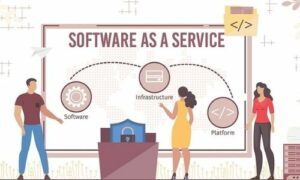The SaaS industry is experiencing a shift in how companies approach revenue management. Traditional subscription models with fixed monthly or annual fees often fail to reflect actual usage, leaving customers either overpaying or underutilizing services. This has led to the rise of adaptive billing systems, where charges are directly linked to consumption, offering a fairer and more transparent approach. A usage-based billing platform allows businesses to automatically measure, track, and bill customers based on real usage, ensuring that revenue accurately reflects the value delivered. By providing flexible pricing structures, real-time insights, and scalable automation, adaptive billing models are enabling SaaS companies to optimize revenue, improve customer satisfaction, and respond dynamically to market trends.
Aligning Revenue with Actual Customer Usage
Adaptive billing ensures that revenue reflects the real value delivered to clients. Traditional flat-rate subscriptions often result in overcharging or undercharging, which can frustrate customers and reduce revenue. By connecting billing directly to usage, SaaS companies can optimize profitability while maintaining trust.
- Fairness for Customers: Clients pay only for what they use, avoiding unnecessary charges. This fairness fosters loyalty, encourages long-term engagement, and reduces churn because customers feel they are being treated equitably.
- Revenue Accuracy: Charges that match actual consumption ensure that businesses capture the true value of their services. This minimizes revenue leakage from underbilling and prevents disputes from overbilling.
- Predictable Growth: Usage data offers valuable insights that help companies forecast revenue, plan expansion, and identify high-value customer segments, allowing for more strategic decision-making.

Pay-As-You-Go Flexibility
The pay-as-you-go model is central to adaptive billing, removing the limitations of fixed subscription tiers. Customers pay based on actual usage rather than a standard monthly fee, reducing unnecessary costs while increasing satisfaction.
- Customer Empowerment: Users can monitor their usage and pay only for the resources they consume. This gives them a sense of control over spending, which improves satisfaction and encourages long-term loyalty.
- Operational Efficiency: Billing automation reduces manual work and the risk of errors, saving teams significant time and operational costs while improving accuracy.
- Seamless Scalability: As customer usage increases or decreases, the system automatically adjusts charges. This allows SaaS companies to handle variable demand without disrupting service or workflows.
Real-Time Transparency
Real-time transparency is essential for both clients and businesses. Adaptive billing platforms provide instant visibility into usage, charges, and trends, reducing disputes and promoting trust.
- Instant Usage Monitoring: Clients can see their consumption and associated costs in real time. This eliminates surprises at the end of the billing cycle and empowers users to adjust their usage proactively.
- Dispute Reduction: Transparent billing decreases misunderstandings between SaaS providers and clients. Fewer disputes mean a stronger relationship with customers and less time spent resolving conflicts.
- Data-Driven Decisions: Businesses can analyze consumption patterns and optimize pricing strategies or feature offerings. This actionable insight helps refine marketing, upselling, and retention tactics.
Dynamic Market Adaptation
Adaptive billing allows SaaS companies to respond quickly to shifting market demands. Pricing structures can be modified easily, keeping offerings competitive while reducing operational disruptions.
- Flexible Promotions: Providers can experiment with discounts, seasonal offers, or new pricing tiers without overhauling the billing system. This enables targeted marketing campaigns that attract and retain customers.
- Competitive Advantage: The ability to adjust pricing on the fly ensures SaaS companies remain agile and responsive to competitors, helping them maintain relevance in a fast-moving market.
- Customer Retention: Tailored billing plans accommodate specific client needs, which improves satisfaction and loyalty, ultimately reducing churn and increasing lifetime value.

Developer-First Architecture
Modern billing platforms like FlexPrice are designed with developers in mind. APIs, SDKs, and modular components enable seamless integration and flexible implementation of complex pricing logic.
- Easy Integration: Platforms connect effortlessly with existing applications, databases, and workflows, reducing the technical burden on engineering teams.
- Customizable Logic: Businesses can implement diverse pricing rules, promotional codes, or tiered features without manual coding. This flexibility ensures that billing reflects the company’s strategy accurately.
- Focus on Innovation: By eliminating the need to develop and maintain in-house billing systems, developers can focus on improving the core product and delivering new features faster.
Global Scaling Made Simple
Expanding internationally adds complexity to billing due to currency conversions, taxes, and compliance requirements. Adaptive billing platforms simplify these operations for SaaS companies.
- Multi-Currency Support: Clients can be billed in their local currency with automatic conversions, reducing friction and improving the customer experience across regions.
- Tax Compliance: Platforms calculate and apply local taxes accurately, ensuring regulatory adherence and reducing the risk of penalties.
- Unified Operations: Multi-product subscriptions, usage charges, and entitlements can be managed from a single system, streamlining global operations and improving efficiency.
Feature Management and Entitlements
Adaptive billing platforms allow SaaS companies to manage access to product features based on subscription tiers or usage. This ensures fair monetization while aligning services with consumption.
- Usage Limits: Companies can enforce limits to prevent overuse or abuse of resources, maintaining service quality while still meeting customer needs.
- Feature Gating: Premium or advanced features can be unlocked for eligible clients, encouraging upgrades and maximizing revenue potential.
- Seamless Upgrades: Users can expand capabilities effortlessly as their usage increases, providing flexibility and enhancing the overall customer experience.
Security and Compliance
Security and compliance are critical for billing operations. Platforms like FlexPrice follow stringent security protocols to protect sensitive financial and customer data.
- SOC 2 Type II Compliance: Ensures all financial and personal data is handled securely, providing peace of mind to businesses and clients.
- Industry-Standard Protocols: Secure encryption, access controls, and monitoring safeguard the platform against potential breaches or misuse.
- Customer Confidence: A secure, compliant platform fosters trust among clients, which is vital for long-term relationships and business credibility.
Conclusion:
Adaptive billing models are revolutionizing the way SaaS companies manage revenue. By linking charges directly to usage, businesses ensure fairness, transparency, and scalability. Implementing a usage-based billing platform like FlexPrice enables companies to handle complex pricing structures, multi-currency transactions, feature entitlements, and global compliance efficiently. FlexPrice modular, developer-first design that provides flexibility, security, and operational control, making it an ideal solution for optimizing SaaS subscription management. Companies leveraging this platform can scale confidently, experiment with pricing strategies, and deliver a transparent, customer-friendly billing experience.





































